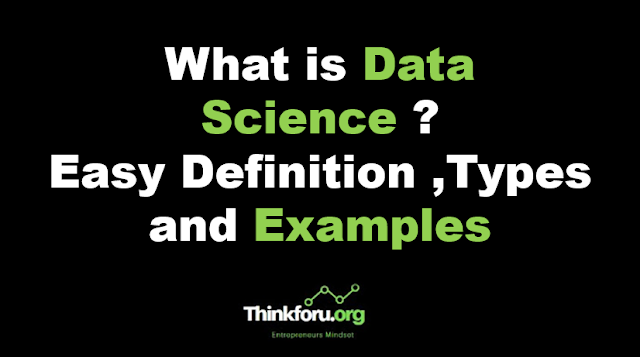What is Data Science ? Easy Definition ,Types and Examples
What is Data Science? Easy Definition, Types, and Examples
 |
| Cover Image of What is Data Science? Easy Definition,Types, and Examples |
Data science is a multidisciplinary field that uses scientific methods, algorithms, processes, and systems to extract insights and knowledge from structured and unstructured data. It combines various aspects of mathematics, statistics, computer science, and domain expertise to analyze and interpret complex data sets.
Data Science Easy Definition:
Data science involves collecting, cleaning, and analyzing data to uncover patterns, trends, and correlations that can be used to make informed decisions and predictions.
Types of Data Science:
1. Descriptive Analytics: Describing what has happened in the past based on historical data.
2. Predictive Analytics: Forecasting future outcomes based on patterns and trends identified in historical data.
3. Prescriptive Analytics: Recommending actions to optimize outcomes based on predictive models.
4. Diagnostic Analytics: Identifying reasons for past outcomes or events by analyzing data.
Examples of Data Science Applications:
E-commerce: Recommending products to users based on their past purchases and browsing behavior.
Healthcare: Predicting patient outcomes based on medical history and demographic data.
Finance: Detecting fraudulent transactions using anomaly detection algorithms.
Social Media: Analyzing sentiment to understand customer opinions and preferences.
Transportation: Optimizing routes and schedules based on traffic patterns and demand.
Manufacturing: Predictive maintenance to reduce downtime by detecting equipment failures before they occur.
Marketing: Targeting specific customer segments with personalized campaigns based on demographic and behavioral data.
These examples demonstrate how data science is applied across various industries to solve problems, improve efficiency, and drive innovation.